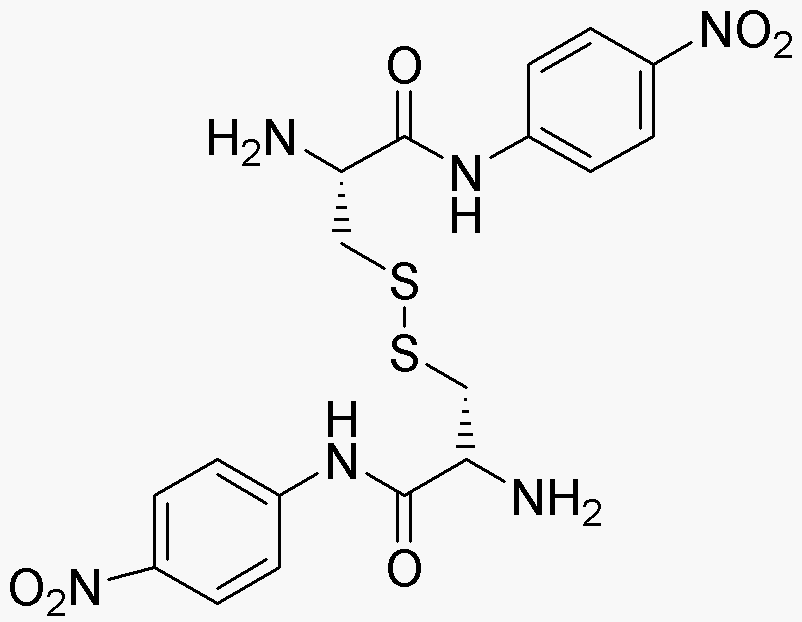L-Cystine bis-4-nitroanilide is widely utilized in research focused on:
- Biochemical Assays: This compound serves as a substrate in enzyme assays, particularly for studying the activity of cysteine proteases, which are important in various biological processes.
- Fluorescent Probes: It can be used to develop fluorescent probes for detecting thiol-containing compounds in biological samples, aiding in the study of oxidative stress and cellular signaling.
- Drug Development: In pharmaceutical research, it assists in the design of new drugs targeting specific enzymes, providing insights into structure-activity relationships.
- Antioxidant Research: The compound is valuable in studying antioxidant properties, helping researchers understand its potential protective effects against cellular damage.
- Material Science: It is also explored in the development of novel materials with specific chemical properties, contributing to advancements in nanotechnology and polymer science.
General Information
Properties
Safety and Regulations
Applications
L-Cystine bis-4-nitroanilide is widely utilized in research focused on:
- Biochemical Assays: This compound serves as a substrate in enzyme assays, particularly for studying the activity of cysteine proteases, which are important in various biological processes.
- Fluorescent Probes: It can be used to develop fluorescent probes for detecting thiol-containing compounds in biological samples, aiding in the study of oxidative stress and cellular signaling.
- Drug Development: In pharmaceutical research, it assists in the design of new drugs targeting specific enzymes, providing insights into structure-activity relationships.
- Antioxidant Research: The compound is valuable in studying antioxidant properties, helping researchers understand its potential protective effects against cellular damage.
- Material Science: It is also explored in the development of novel materials with specific chemical properties, contributing to advancements in nanotechnology and polymer science.
Documents
Safety Data Sheets (SDS)
The SDS provides comprehensive safety information on handling, storage, and disposal of the product.
Product Specification (PS)
The PS provides a comprehensive breakdown of the product’s properties, including chemical composition, physical state, purity, and storage requirements. It also details acceptable quality ranges and the product's intended applications.
Certificates of Analysis (COA)
Search for Certificates of Analysis (COA) by entering the products Lot Number. Lot and Batch Numbers can be found on a product’s label following the words ‘Lot’ or ‘Batch’.
*Catalog Number
*Lot Number
Certificates Of Origin (COO)
This COO confirms the country where the product was manufactured, and also details the materials and components used in it and whether it is derived from natural, synthetic, or other specific sources. This certificate may be required for customs, trade, and regulatory compliance.
*Catalog Number
*Lot Number
Safety Data Sheets (SDS)
The SDS provides comprehensive safety information on handling, storage, and disposal of the product.
DownloadProduct Specification (PS)
The PS provides a comprehensive breakdown of the product’s properties, including chemical composition, physical state, purity, and storage requirements. It also details acceptable quality ranges and the product's intended applications.
DownloadCertificates of Analysis (COA)
Search for Certificates of Analysis (COA) by entering the products Lot Number. Lot and Batch Numbers can be found on a product’s label following the words ‘Lot’ or ‘Batch’.
*Catalog Number
*Lot Number
Certificates Of Origin (COO)
This COO confirms the country where the product was manufactured, and also details the materials and components used in it and whether it is derived from natural, synthetic, or other specific sources. This certificate may be required for customs, trade, and regulatory compliance.


